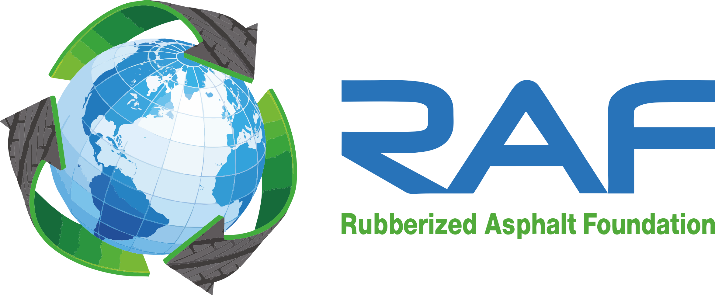RAF member Liberty Tire Recycling joined forces with Bridgestone/Firestone recently to provide a one-day education and training event focusing on rubberized asphalt. The event was held at the Bridgestone Technical Research Facility in Akron, Ohio.
The program started off with an overview of the Bridgestone Sustainability Program: One Team, One Planet. The presentation by Bridgestone’s John Sheerin featured the LEED Silver Leaf award design of the meeting space with items such as a green roof design; the use of bio design, such as mimicking the pattern of a polar bear paw for winter tire treads; and the search for alternative rubber sources, such as the guayule plant that grows in hot and arid climates.
The second presentation focused on tire processing in Ohio. Presented by Steve Callahan, director of inbound sales for Liberty Tire Recycling, the talk provided an overview of U.S. markets for scrap tires and information on how tires are processed into recycled tire rubber material that is suitable for use in asphalt.
The third speaker was Harry Smail, of the Ohio Environmental Protection Agency, who provided details of the state-run tire program that has experienced success over the last 20 years in cleaning up some of the largest tire piles in the U.S. Some of the major achievements of Ohio’s scrap tire program include:
- Comprehensive regulatory and enforcement program established
- $10 million in stimulus market development grants for diverse and sustainable scrap tire markets in Ohio
- $3.1 million in tire amnesty grants to help local governments avoid open dumping
- 534 legacy and other scrap tire sites remediated, thereby eliminating threats to the environment and public health
An informative presentation on the use of modified binders in the Ohio asphalt industry was provided by Bill Fair, director of engineering services for Flexible Pavements of Ohio. Several links to ODOT specifications were provided with the recent (July 19, 2013) revision to the asphalt binder spec, which allows rubber to be used as an alternative modifier. See section 702.01 of the SSP.
The next session was provided by Don Sjogren, of Seneca Petroleum, a local manufacturer of rubberized asphalt binders since 2003. Don provided an informative talk on how asphalt binders are made or refined from crude oil and how Seneca uses tire rubber as an alternative modifier. He also reviewed comparative performance data from the National Center for Asphalt Technology test track where virgin (SBS) polymer asphalt and a tire rubber modified asphalt were placed and studied under the same traffic loading and environmental conditions. The study concluded that tire rubber can perform equally to the virgin SBS.
Don also shared design information on the “Environmental Leadership Award”-winning project from NAPA which was on Michigan Avenue in Chicago, Illinois. The project used a stone matrix design that included reclaimed asphalt pavement, recycled asphalt shingles and recycled tire rubber to create a stronger pavement at a lower cost.
The program concluded with an overview of the use of recycled tire rubber in asphalt, which was provided by Doug Carlson, vice president of asphalt products for Liberty Tire Recycling. Information on the use of asphalt-rubber (ASTM D6114) was provided and it was pointed out that the classic A-R binders are highly modified, similar to a binder with 7% virgin polymer content. These highly modified AR binders have been used in reduced thickness applications, which was verified by Caltrans in the 1990s and again by the FHWA ALF study conducted in 2002 and published in 2012. The immediate emerging trend is to use recycled tire rubber as an alternative modifier in PG binders. The AASHTO M320 performance graded asphalt specification is under a ballot that will allow the use of tire rubber in PG binder.
The presentation also included information on the use of warm mix materials with rubberized binders that make it easier to place and compact rubberized mixes. Warm mix technology has also been used in hot applied spray systems to eliminate “blue smoke” in chip seals. A brief on the use of rubber in cold climates was also provided where performance has been satisfactory in climates such as Alaska, Saskatchewan, Sweden, Siberia and close by in Pennsylvania, New Jersey and Massachusetts.
Technologies on the horizon involve rubber that is pre-reacted and then packaged and handled like a dry material such as RuBind or pelletized such as with Phoenix Industries.
In conclusion, rubberized asphalt technology will continue to emerge and evolve as long as the cost of liquid asphalt and crude oil stay elevated.
PLUS! See an interview from the event with Dick Gust president of national accounts for Liberty Tire Recycling by Tire Business reporter Kathy McCarron.
